 1996 Nissan Bluebird (U14) Dimensions, Size & Specs
1996 Nissan Bluebird (U14) Dimensions, Size & SpecsMeasurements of the 1996 Nissan Bluebird, engineered for optimal performance and comfort
| Dimensions | |
|---|---|
| Length: | 4565 mm179.7 in15.0 ft |
| Width: | 1695 mm66.7 in5.6 ft |
| Height: | 1395-1420 mm54.9-55.9 in4.6-4.7 ft |
| Ground Clearance: | 140-155 mm5.5-6.1 in0.5-0.5 ft |
| Weight Specifications | |
| Curb Weight: | 1160-1340 kg2557-2954 lbs |
| Maximal permitted Weight: | 1445-1525 kg3186-3362 lbs |
| Tire Specifications | |
| Rims Sizes: |
|
| Tire Sizes: |
|
The Nissan Bluebird (U14) is a mid-sized sedan produced between 1996 and 2001, embodying Nissan's design and engineering from the late 1990s. This generation of the Bluebird offers balanced proportions with a length of 4565 mm (179.7 inches), a width of 1695 mm (66.7 inches), and a height ranging between 1395 mm to 1420 mm (54.9 to 55.9 inches). The overall stance presents a comfortable and practical sedan suited for everyday urban and suburban use.
Curb weight for the Bluebird U14 varies from 1160 kg to 1340 kg (2557 to 2954 lbs), depending on the specific trim and equipment specification, while the maximum permissible weight ranges from 1445 kg to 1525 kg (3187 to 3363 lbs). This makes it a relatively lightweight sedan within its segment, contributing positively to fuel efficiency and handling characteristics.
The ride height or ground clearance of the Bluebird U14 is between 140 mm and 155 mm (5.5 to 6.1 inches), offering adequate clearance for various road surfaces without compromising stability. Wheel and tire options for this generation include 14-inch and 15-inch rims fitted with a variety of tire sizes: 185/65 R14, 175/70 R14, 195/60 R15, 185/70 R14, and 195/65 R14, allowing for customization based on driver preference or driving conditions.
Overall, the Nissan Bluebird (U14) was designed to meet the needs of customers looking for a reliable, moderately sized sedan with decent interior space, manageable exterior dimensions, and practical weight characteristics. Its size and weight place it comfortably within the family sedan category, catering well to commuter and small family uses during its production period.
Discover the standout features that make the 1996 Nissan Bluebird a leader in its class
Have a question? Please check our knowledgebase first.
The Nissan Bluebird (U14) sedan, produced between 1996 and 2001, measures 4565 mm (approximately 179.7 inches) in length and 1695 mm (about 66.7 inches) in width. These dimensions place it comfortably in the compact to mid-size sedan category, providing a balance between internal passenger space and easy maneuverability in urban environments. The length allows ample interior room for passengers, while the width supports a stable and comfortable ride.
The Nissan Bluebird (U14) features a height range between 1395 mm to 1420 mm (approximately 54.9 to 55.9 inches), depending on the specific variant and suspension setup. This relatively low height contributes to a sleek aerodynamic profile and a sporty appearance, while still providing adequate headroom for front and rear passengers. Although it is not as tall as some larger sedans or SUVs, the Bluebird's interior design optimizes space to maintain comfortable seating posture and visibility for everyday driving.
The curb weight of the Nissan Bluebird (U14) varies between 1160 kg and 1340 kg (approximately 2557 to 2954 pounds) depending on the specific trim and equipment. This moderate weight contributes to nimble handling and relatively good fuel efficiency, typical of mid-size sedans in the late 1990s era. A lighter curb weight generally helps reduce fuel consumption and improves acceleration, while also allowing for more responsive steering and maneuverability on various road conditions.
The Nissan Bluebird (U14) has a maximum weight capacity ranging from 1445 kg to 1525 kg (approximately 3187 to 3364 pounds), which includes the vehicle's curb weight and the combined weight of passengers, cargo, and any additional equipment. This capacity allows the sedan to comfortably carry up to five passengers along with standard luggage or groceries without compromising driving safety or vehicle performance. Staying within this limit ensures that the car's suspension and braking systems operate efficiently and that tire wear is minimized.
The Nissan Bluebird (U14) is compatible with a variety of tire sizes, including 185/65 R14, 175/70 R14, 195/60 R15, 185/70 R14, and 195/65 R14, mounted on rim sizes of 14 or 15 inches. These tire and rim options offer balanced performance in terms of ride comfort, grip, and handling. Larger 15-inch rims with wider tires may provide better cornering stability and a sportier feel, while 14-inch rims typically afford a smoother ride quality ideal for daily commuting. Proper tire choice can also influence fuel economy and noise levels.
Yes, the Nissan Bluebird (U14) fits comfortably within a standard residential garage. Given its length of 4565 mm (179.7 inches) and width of 1695 mm (66.7 inches), it is compact enough to be parked in typical single-car garages, which commonly accommodate vehicles around 6 meters (19.7 feet) long and 2.4 meters (7.9 feet) wide. The relatively low height, maxing around 1420 mm (55.9 inches), means that standard garage door heights will also pose no issues. Owners can expect ease of parking and maneuvering in typical home garage spaces.
Compared to its predecessor, the Nissan Bluebird U13, the U14 generation generally retained a similar footprint but featured subtle dimension adjustments aimed at improving interior space and aerodynamics. The U14’s length of 4565 mm and width of 1695 mm reflect a slight increase or maintenance of size to offer more cabin comfort without significantly growing the vehicle’s external dimensions. These refinements contributed to a more modern and sleek appearance while maintaining the balanced handling dynamics expected from the Bluebird lineup.
The Nissan Bluebird (U14) sits competitively among other mid-size sedans of the late 1990s. With a length of 4565 mm, width of 1695 mm, and a height range just under 1420 mm, it compares closely to contemporaries like the Toyota Camry and Honda Accord, which have similar dimensions. While some rivals might be marginally longer or wider, the Bluebird’s layout prioritizes efficient interior space and a low profile design. Its weight and ride height further align it with competitors, balancing fuel economy with handling prowess and passenger comfort.
The Nissan Bluebird (U14) generally has a ground clearance ranging from 140 mm to 155 mm (approximately 5.5 to 6.1 inches). This moderate clearance allows the car to handle typical urban obstacles such as speed bumps, uneven roads, and mild off-road conditions without scraping its underside. While it is not designed for rugged off-roading, this clearance reflects a balanced compromise to maintain stable handling and a low center of gravity for improved steering precision and ride comfort on paved surfaces.
The Nissan Bluebird (U14) utilizes rim sizes of 14 and 15 inches with compatible tire sizes including 185/65 R14, 175/70 R14, 195/60 R15, 185/70 R14, and 195/65 R14. The choice between these tire and rim options affects the car's handling and ride quality. Larger 15-inch rims often complement wider tires that improve cornering grip and stability at the cost of slightly firmer ride quality. Conversely, 14-inch rims are paired with narrower tires which tend to absorb road irregularities better, enhancing ride comfort but potentially reducing tight cornering grip slightly. These options allow owners to tailor their driving experience according to preference or road conditions.
Discover similar sized cars.
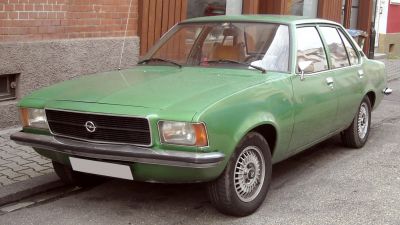
| Production: | 1972-1977 |
|---|---|
| Model Year: | 1972 |
| Length: | 4567 mm179.8 in |
| Width: | 1718 mm67.6 in |
| Height: | 1415 mm55.7 in |
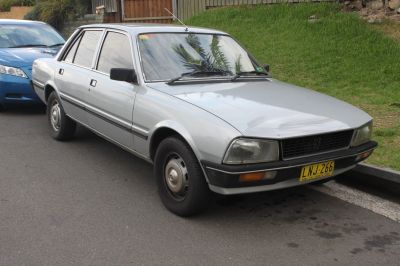
| Production: | 1979-1993 |
|---|---|
| Model Year: | 1979 |
| Length: | 4580 mm180.3 in |
| Width: | 1735 mm68.3 in |
| Height: | 1440 mm56.7 in |
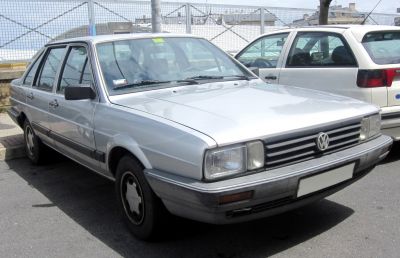
| Production: | 1981-1988 |
|---|---|
| Model Year: | 1981 |
| Length: | 4545 mm178.9 in |
| Width: | 1695 mm66.7 in |
| Height: | 1400 mm55.1 in |
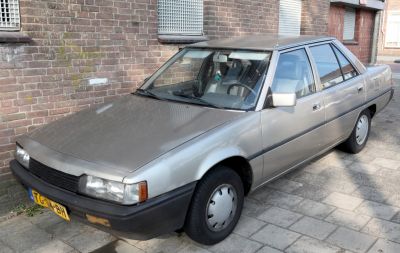
| Production: | 1984-1987 |
|---|---|
| Model Year: | 1984 |
| Length: | 4560 mm179.5 in |
| Width: | 1695 mm66.7 in |
| Height: | 1395 mm54.9 in |
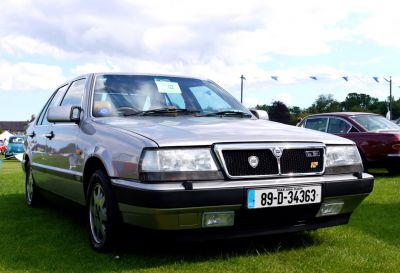
| Production: | 1984-1994 |
|---|---|
| Model Year: | 1984 |
| Length: | 4590 mm180.7 in |
| Width: | 1750 mm68.9 in |
| Height: | 1435 mm56.5 in |

| Production: | 1986-1994 |
|---|---|
| Model Year: | 1986 |
| Length: | 4495 mm177.0 in |
| Width: | 1670 mm65.7 in |
| Height: | 1365 mm53.7 in |
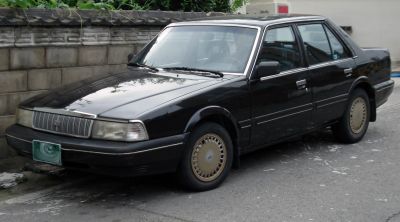
| Production: | 1987-1995 |
|---|---|
| Model Year: | 1987 |
| Length: | 4570 mm179.9 in |
| Width: | 1720 mm67.7 in |
| Height: | 1405 mm55.3 in |

| Production: | 1989-2002 |
|---|---|
| Model Year: | 1987 |
| Length: | 4515-4595 mm177.8-180.9 in |
| Width: | 1695 mm66.7 in |
| Height: | 1395-1440 mm54.9-56.7 in |
